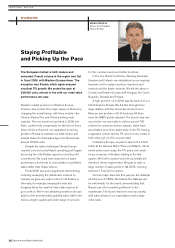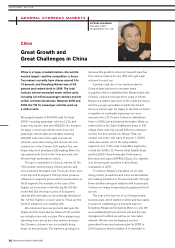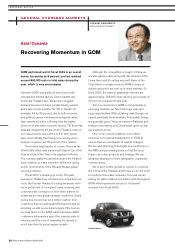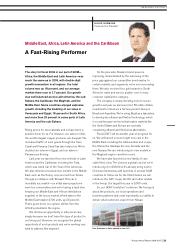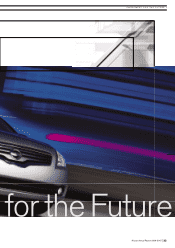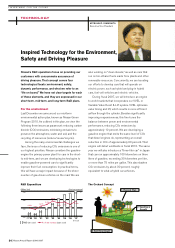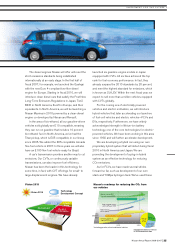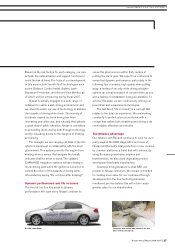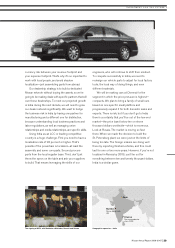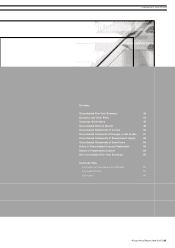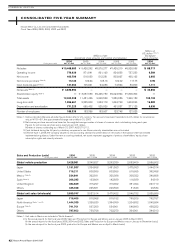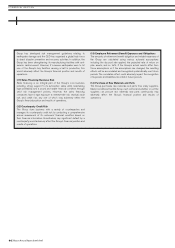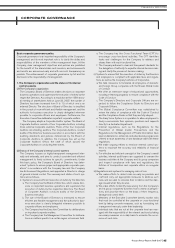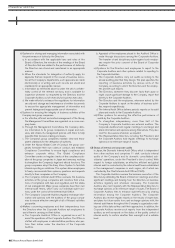Nissan 2007 Annual Report Download - page 38
Download and view the complete annual report
Please find page 38 of the 2007 Nissan annual report below. You can navigate through the pages in the report by either clicking on the pages listed below, or by using the keyword search tool below to find specific information within the annual report.
Nissan Annual Report 2006-2007
36
to power the 2005 model X-TRAIL FCV, which has a
range and acceleration comparable to those of its
gasoline sibling. We will have a high-performance in-
house stack for wider production application by the
early part of the 2010s, starting with the U.S.—where
a fueling infrastructure for hydrogen is currently
being built—and then in Japan.
We think that EV use can be expanded from the
first half of 2010, but we need to extend the range
and establish a network of charging stations in
collaboration with other industries. We will continue
real-world testing in Japan until 2010. Our plan is to
introduce a production version to the market in the
early part of the decade, beginning in Japan.
The three core technologies for any electrically
powered vehicle are the motor, battery and inverter.
To achieve the objective of the Nissan Green
Program 2010 plan, we will continue to improve their
performance and reduce costs to a practical level.
Nissan has long been the leader in lithium-ion
batteries for automobiles, and we’ve now established
a joint-venture company with NEC to develop,
manufacture and market these batteries. This joint
venture will be producing an all-new lithium-ion
battery that will set industry standards for superior
performance and low cost. The batteries the new
company produces will be used on the hybrids, EVs
and FCVs. Some competitors have stopped lithium-
ion battery development, primarily because of safety
issues. Our lithium-ion battery is different from those
our competitors have devised and has much better
safety characteristics.
For safety
Safety, of course, is another critical area, and our
safe driving environment goal is to reduce the
number of accidents to achieve the ultimate
objective expressed in our Vision Zero plan. That
goal is to cut the number of Nissan-related
automobile accidents that resulted in fatalities and
serious injuries in 1995 in half by 2015. And it’s
working. Fatalities and serious injuries among the
10,000 Nissan-related automobile accidents in 2004
declined by 27 percent, and in 2005 by 34 percent.
We have been promoting R&D based on our
original concept, called the “Safety Shield,” since
2004. The Safety Shield refers to active safety
measures that use the vehicle itself to help avoid
accidents. To clarify things, we’ve divided the
accident “environment” into six categories:
unforeseen risk, apparent risk, possible crash,
unavoidable crash, actual crash, and post-crash.
Safety Shield
The vehicle activates various technologies to help the driver, passengers and other road users avoid danger from
normal driving conditions through post-accident conditions.
Helps the driver maintain
comfortable driving
Helps the driver return to a safe
driving mode in dangerous conditions
Helps reduce injuries and damage
when a collision is unavoidable
»INVESTMENT FOR THE FUTURE
TECHNOLOGY


